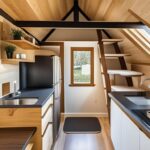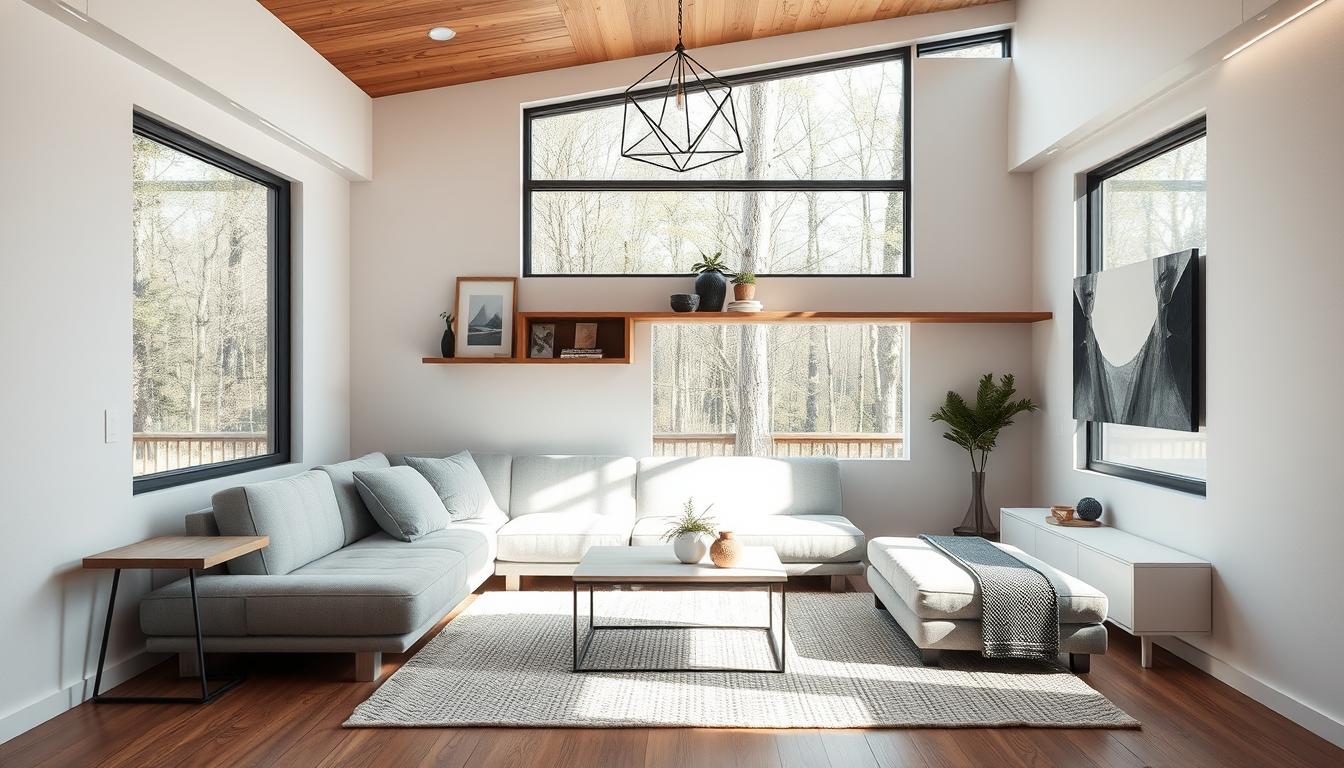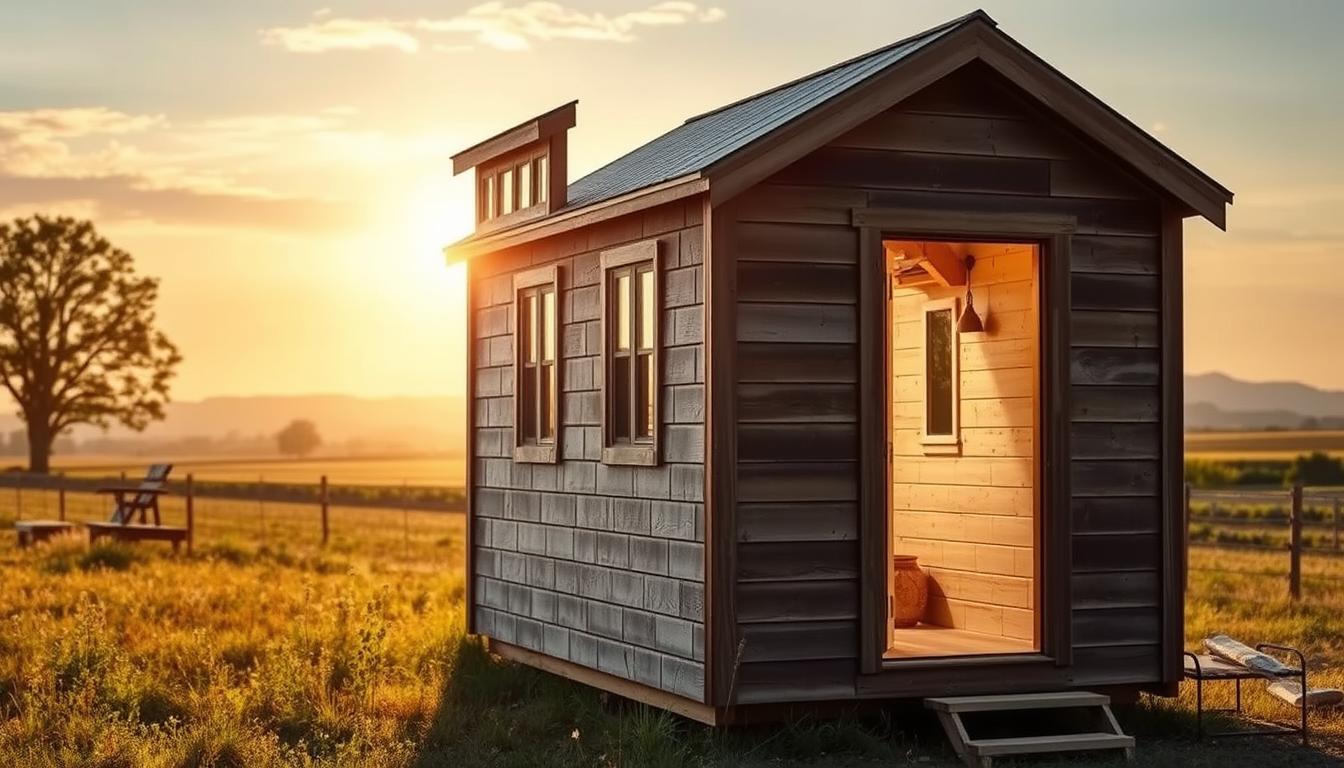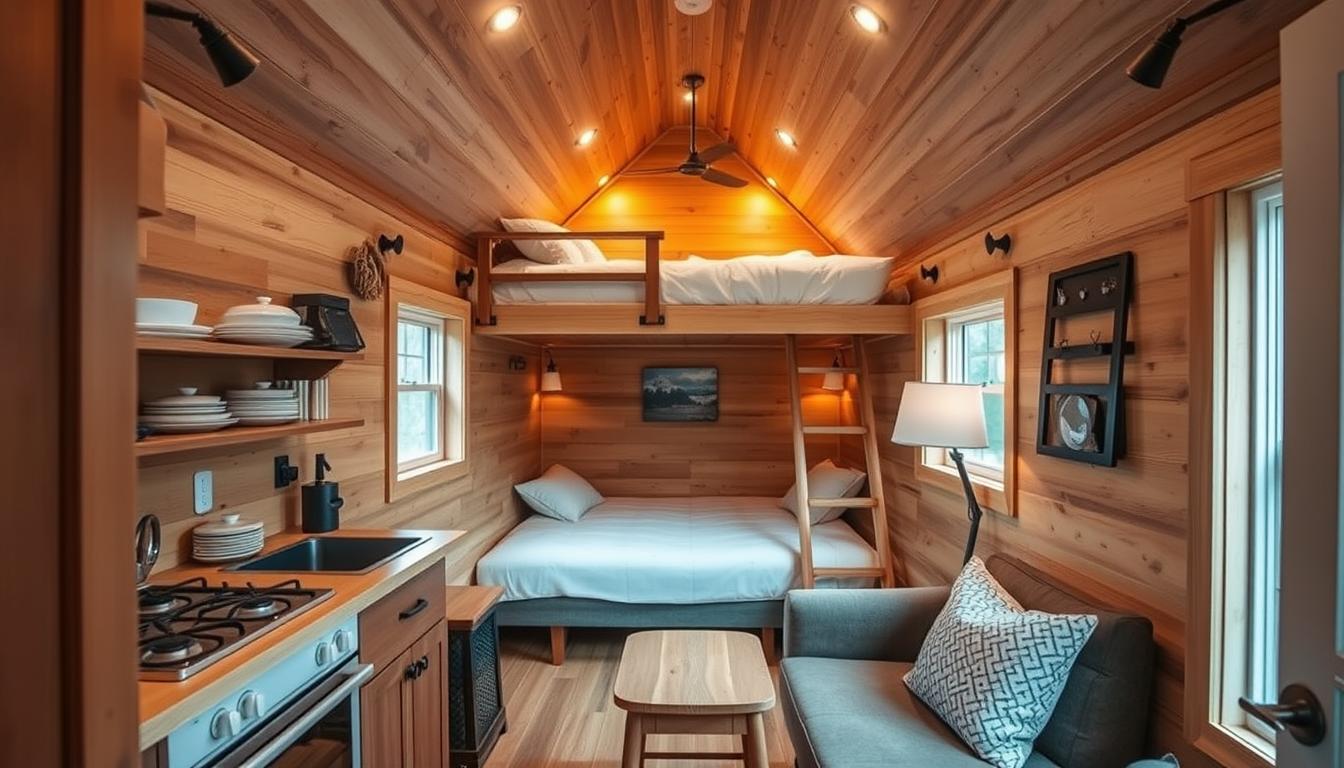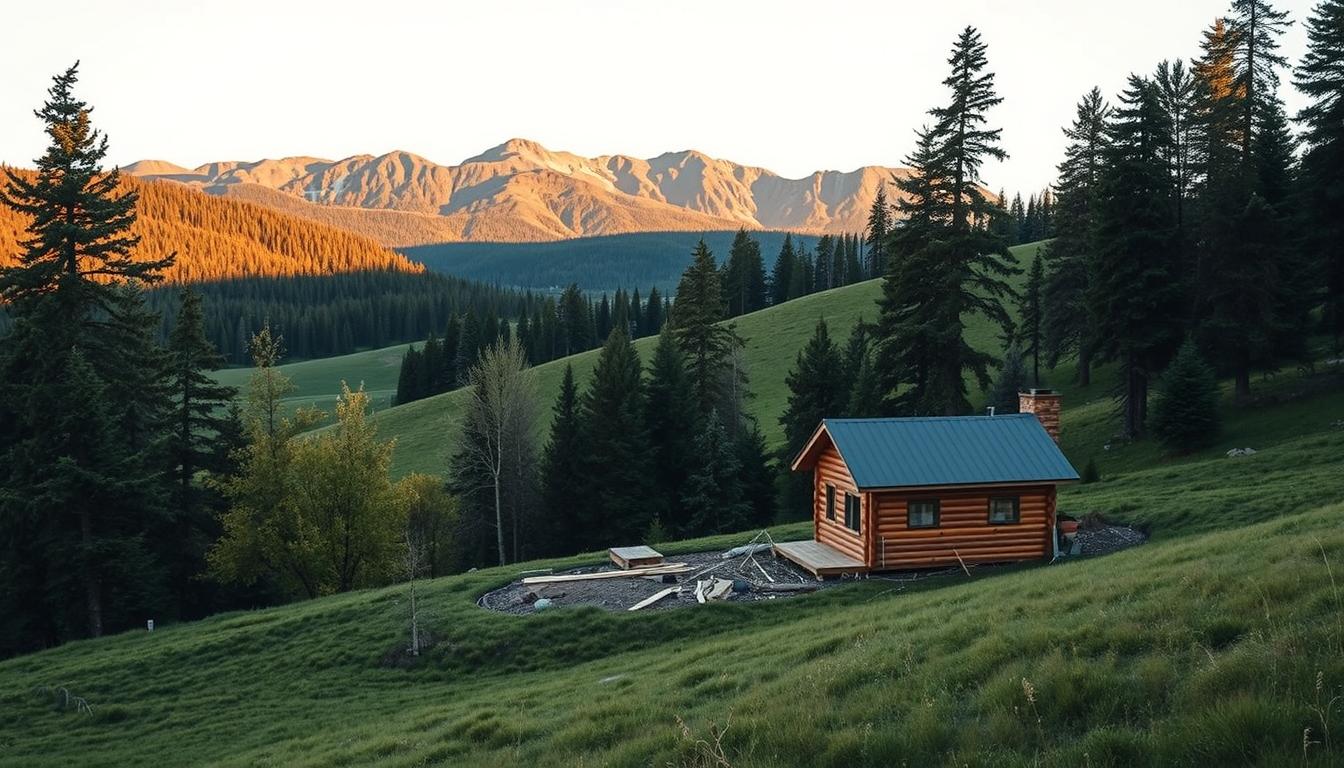What readers will learn by reading this article:
- Definition and importance of tiny house floor plans
- Challenges and strategies for designing floor plans in small spaces
- Considerations for customization, storage, off-grid living, and working with professionals
When it comes to designing a tiny house, one of the most crucial elements to consider is the floor plan. A well-designed floor plan can make all the difference in maximizing space and functionality in a limited area. In this article, we will explore the definition and importance of tiny house floor plans, the benefits they offer in the context of the tiny house movement, and how they contribute to maximizing space and functionality.
Definition and importance of tiny house floor plans
A tiny house floor plan refers to the layout and arrangement of spaces within a small living unit. It determines the organization of rooms, the flow of movement, and the overall functionality of the space. The importance of a well-designed floor plan cannot be overstated when it comes to tiny houses. With limited square footage available, every inch of space needs to be carefully considered and utilized effectively. A thoughtfully designed floor plan can help create a comfortable and functional living environment, despite the constraints of size.
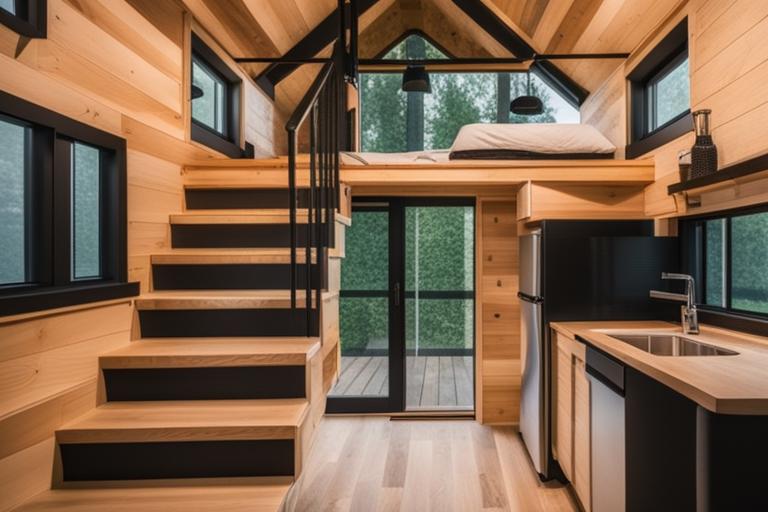
Benefits of well-designed floor plans in the tiny house movement
The tiny house movement has gained significant momentum in recent years, with more and more people embracing the idea of downsizing and living a simpler, more sustainable lifestyle. Well-designed floor plans play a crucial role in this movement by offering several benefits. Firstly, they maximize the use of available space, allowing for efficient utilization of every square foot. Secondly, they enhance functionality by incorporating smart design solutions that optimize the layout for daily activities. Lastly, they contribute to a sense of comfort and well-being by creating a space that feels open, organized, and tailored to the needs of the occupants.
How floor plans contribute to maximizing space and functionality
Tiny house floor plans are specifically designed to make the most of limited space. They employ various strategies to maximize both vertical and horizontal space. Creative spatial organization techniques, such as open-concept layouts and multifunctional spaces, ensure that every area serves a purpose. Effective utilization of vertical space through loft designs and innovative storage solutions helps to expand the usable area. By carefully considering the number of rooms, layout options, and essential amenities, a well-designed floor plan can create a functional and efficient living space within the constraints of a tiny house.
Understanding Space Constraints in Tiny House Floor Plans
Designing floor plans for tiny houses comes with its unique set of challenges. The limited square footage requires careful consideration and creative problem-solving. In this section, we will explore the unique challenges of designing floor plans for tiny houses, techniques for making the most of limited space, and the importance of multifunctional spaces and creative storage solutions.
Unique challenges of designing floor plans for tiny houses
Designing a floor plan for a tiny house requires a shift in mindset compared to traditional home design. The primary challenge is to create a functional living space within a significantly smaller area. This means rethinking the traditional room sizes and configurations and finding innovative solutions to accommodate essential amenities and storage. Additionally, maximizing natural light and ventilation becomes crucial to create an open and airy feel in a compact space. Adapting to these challenges requires a combination of creativity, practicality, and a deep understanding of the unique needs and limitations of tiny house living.
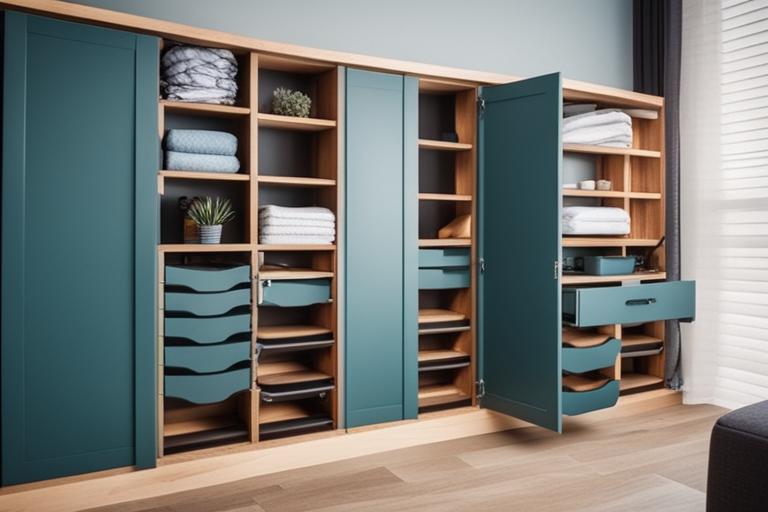
Making the most of limited square footage
- Creative spatial organization techniques
One of the key strategies for designing a tiny house floor plan is to think creatively about spatial organization. This involves reimagining how different areas can serve multiple functions, eliminating unnecessary walls, and optimizing the flow of movement. For example, a dining area can double as a workspace or a guest bed can be integrated into a living room. By carefully planning the layout and considering the versatility of each space, it is possible to create a multi-functional and efficient living environment.
- Utilizing vertical space effectively
In tiny houses, vertical space is a valuable resource that should not be overlooked. By incorporating loft designs, mezzanines, or high ceilings, it is possible to expand the usable area without increasing the footprint of the house. This additional vertical space can be used for sleeping areas, storage, or even a small home office. Maximizing the use of vertical space requires careful planning and consideration of safety measures, such as sturdy railings and adequate headroom, to ensure a comfortable and secure living environment.
Multifunctional spaces and creative storage solutions
In a tiny house, every square inch counts. This is where multifunctional spaces and creative storage solutions become essential. Furniture pieces that can serve multiple purposes, such as sofa beds or dining tables with built-in storage, are excellent choices for maximizing space. Additionally, incorporating hidden storage compartments, such as under-bed storage and wall-mounted shelves, can help keep the living area clutter-free and organized. By combining smart design solutions with efficient storage solutions, it is possible to create a tiny house floor plan that maximizes both space and functionality.
Design Considerations for Tiny House Floor Plans
When designing a tiny house floor plan, several considerations need to be taken into account to ensure optimal space utilization and flow. In this section, we will explore factors to consider when determining the number of rooms and selecting the right layout, the importance of traffic flow and ergonomic design, and strategies for incorporating essential amenities and appliances.
Determining the number of rooms and selecting the right layout
- Factors to consider when choosing room types
The first step in designing a tiny house floor plan is to determine the number and types of rooms needed to meet the occupants’ requirements. Considerations such as the number of people living in the house, their lifestyle, and specific needs, such as a home office or a dedicated workspace, should guide this decision-making process. It is essential to prioritize the must-have rooms and carefully assess whether certain areas can serve multiple purposes to optimize space utilization.
- Considerations for open concept vs. compartmentalized layouts
Another important decision to make when designing a tiny house floor plan is whether to opt for an open concept or compartmentalized layout. Open concept layouts provide a sense of spaciousness and allow for flexible use of space. They also promote natural light and airflow, creating a more comfortable living environment. On the other hand, compartmentalized layouts offer privacy and defined spaces for specific activities. The choice between these two options depends on personal preferences, lifestyle, and the need for privacy versus openness.
Optimizing space utilization and flow
- Importance of traffic flow and ergonomic design
In a tiny house, efficient traffic flow and ergonomic design are crucial for creating a functional and comfortable living space. Careful consideration should be given to the arrangement of furniture, doorways, and walkways to ensure easy and unobstructed movement throughout the house. By minimizing dead spaces and optimizing the flow, it is possible to create a sense of openness and make the most of the available square footage.
- Strategies for maximizing functionality in small spaces
Maximizing functionality in tiny house floor plans requires a focus on practicality and smart design solutions. This can include incorporating built-in furniture, such as fold-down tables or murphy beds, to save space when not in use. Additionally, using sliding doors, pocket doors, or curtains can help save valuable floor space compared to traditional swinging doors. By carefully considering the functionality of each area and incorporating space-saving design elements, it is possible to create a tiny house floor plan that meets the occupants’ needs without sacrificing comfort and convenience.
Incorporating essential amenities and appliances
- Selecting compact and efficient appliances
In a tiny house, every appliance should be chosen with care to ensure it fits within the limited space and meets the occupants’ needs. Compact appliances specifically designed for small spaces, such as slim refrigerators or washer-dryer combos, can help save valuable square footage. Additionally, opting for energy-efficient appliances not only reduces the environmental impact but also saves on utility costs. Careful consideration of the size, functionality, and energy efficiency of appliances is essential to ensure they integrate seamlessly into the tiny house floor plan.
- Ensuring accessibility of amenities in the limited space
When designing a tiny house floor plan, it is important to ensure that essential amenities, such as the kitchen and bathroom, are easily accessible and functional. This involves careful planning of plumbing and electrical systems to optimize space utilization. For example, considering space-saving fixtures, such as corner sinks or wall-mounted toilets, can help maximize available space. Additionally, incorporating storage solutions, such as built-in shelves or cabinets, can help keep essential items within reach without cluttering the living area.
Types of Tiny House Floor Plans
Tiny house floor plans come in various types, each offering its own advantages and considerations. In this section, we will explore open concept layouts for a spacious feel, loft designs for maximizing vertical space, and innovative space-saving solutions, such as foldable furniture.
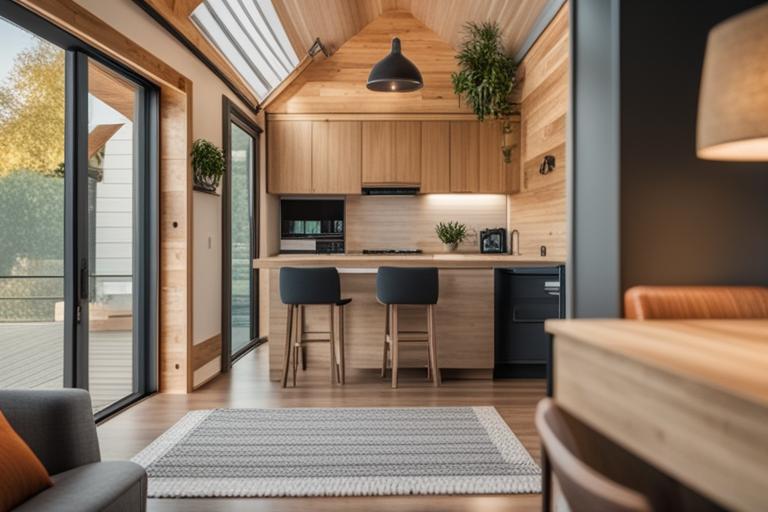
Open concept layouts for a spacious feel
- Advantages and considerations of open floor plans
Open concept layouts have gained popularity in recent years due to their ability to create a sense of spaciousness in small living spaces. By eliminating unnecessary walls and barriers, open floor plans facilitate natural light and airflow, making the space feel larger and more inviting. They also offer flexibility in furniture arrangement and allow for easy social interaction. However, it is important to consider the need for privacy and noise control, as open concept layouts may not be suitable for everyone.
- Design techniques for creating a sense of openness
To create an open concept layout in a tiny house, several design techniques can be employed. Firstly, using consistent flooring throughout the space helps create a seamless flow and visually expands the area. Secondly, incorporating large windows and glass doors maximizes natural light and provides a connection with the outdoors. Lastly, using visual cues, such as color schemes and furniture placement, can help delineate different areas within the open space while maintaining a cohesive and spacious feel.
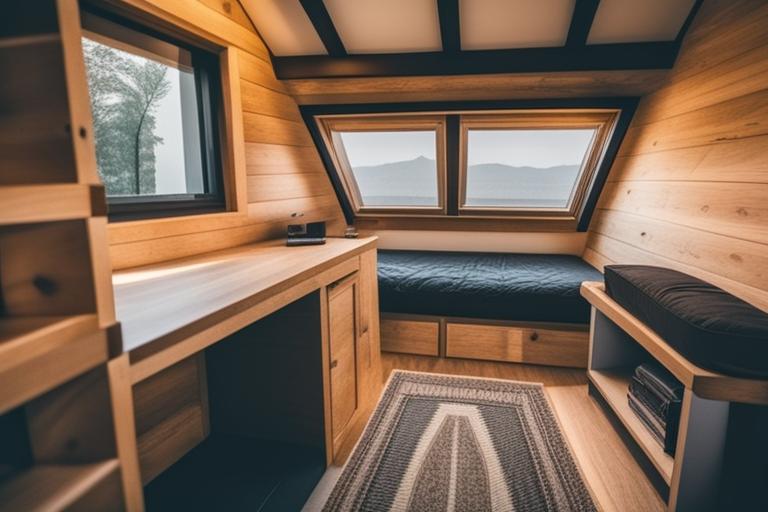
Loft designs for maximizing vertical space
- Benefits and challenges of loft spaces
Loft designs are a popular choice in tiny house floor plans for their ability to maximize vertical space. Lofts can serve as additional sleeping areas, storage spaces, or even home offices. They provide a way to expand the usable area without increasing the footprint of the house. However, loft spaces come with their own set of challenges, such as limited headroom, accessibility concerns, and the need for safety measures, such as sturdy railings and secure ladders or stairs.
- Design considerations for safety and comfort in lofts
When incorporating loft spaces in a tiny house floor plan, safety and comfort should be top priorities. Ensuring adequate headroom and installing secure railings or guardrails are essential to prevent accidents and provide peace of mind. Additionally, incorporating sufficient ventilation and natural light sources in loft areas helps create a comfortable and livable space. It is also important to consider accessibility options, such as stairs or storage-integrated ladders, to ensure easy and safe access to the loft.
Innovative space-saving solutions, such as foldable furniture
- Examples of furniture and storage solutions for small spaces
Innovative space-saving solutions, such as foldable furniture, are excellent options for maximizing both space and functionality in tiny house floor plans. Foldable tables, chairs, and beds can be easily tucked away when not in use, freeing up valuable floor space. Additionally, utilizing furniture with built-in storage features, such as ottomans with hidden compartments or beds with drawers underneath, helps keep the living area organized and clutter-free.
- Integrating multipurpose furniture for maximizing functionality
Multipurpose furniture is another smart design solution for tiny house floor plans. Furniture pieces that can serve multiple functions, such as sofa beds, convertible dining tables, or desks that double as storage units, are excellent choices for maximizing functionality. By combining different functions into a single piece of furniture, it is possible to save space without compromising on comfort and convenience.
[Case Study] The Transformation of Sarah’s Tiny House: Maximizing Space and Functionality
Sarah, a young professional with a love for minimalist living, embarked on a journey to design and build her dream tiny house. She was determined to maximize every inch of her limited square footage and create a space that was both functional and aesthetically pleasing.
The Unique Challenges of Designing for Tiny Houses
Sarah quickly realized that designing for a tiny house presented unique challenges. She needed to carefully consider every aspect of her floor plan to make the most of her limited space. After extensive research and consultation with experts, Sarah learned about creative spatial organization techniques that could help her optimize her floor plan.
Making the Most of Limited Square Footage
Inspired by her research, Sarah decided to utilize vertical space effectively to maximize her storage options. She incorporated built-in shelves and cabinets that stretched from floor to ceiling, allowing her to store her belongings without cluttering the living area. By embracing the concept of multifunctional spaces, Sarah also integrated furniture with hidden storage compartments, such as ottomans and coffee tables with built-in drawers.
Designing for Optimal Flow and Functionality
Sarah understood the importance of traffic flow and ergonomic design in small spaces. She carefully planned the layout of her tiny house to ensure easy movement between areas. She opted for an open concept layout, which not only created a sense of spaciousness but also facilitated a seamless flow from the kitchen to the living area.
To further maximize functionality, Sarah selected compact and efficient appliances that fit seamlessly into her floor plan. She prioritized essential amenities such as a space-saving washer and dryer combo and a compact stove with multiple burners. Sarah also made sure that these amenities were easily accessible, strategically placing them within arm’s reach.
The Personal Touch: Customizing for Individual Needs
As a yoga enthusiast, Sarah wanted to create a small workout area within her tiny house. She worked closely with professionals to customize her floor plan to accommodate this specific requirement. They incorporated a foldable yoga mat that could be easily stored when not in use, allowing her to transform the space into a cozy reading nook or an additional seating area.
The Journey Towards Off-Grid Living
Sarah’s commitment to sustainable living led her to explore off-grid options for her tiny house. She researched and incorporated solar panels and a rainwater collection system into her design, ensuring energy independence and water sustainability. She collaborated with professionals to seamlessly integrate these off-grid components into her floor plan, ensuring that they did not compromise the overall layout and design.
Conclusion
Sarah’s journey to design the perfect tiny house floor plan showcases the importance of maximizing space and functionality in small living spaces. Her story serves as an inspiration for those looking to embark on their own tiny house adventure, encouraging them to consider creative design solutions and customization to create a space that truly meets their needs and preferences.
Customization and Personalization of Tiny House Floor Plans
While pre-designed floor plans offer a convenient starting point, customization and personalization are essential to create a tiny house floor plan that perfectly suits individual needs and preferences. In this section, we will explore modifying existing floor plans to meet individual needs, creating personalized designs based on specific requirements, and considerations for accessibility and accommodating family size.
.
Frequently Asked Questions
What are tiny house floor plans?
Tiny house floor plans are detailed blueprints that show the layout and dimensions of a small living space.
Who creates tiny house floor plans?
Architects and designers specialize in creating functional and efficient floor plans for tiny houses.
How do I choose the right tiny house floor plan?
Consider your needs, lifestyle, and available space to select a floor plan that maximizes functionality and suits your preferences.
What if I want to customize a tiny house floor plan?
Many architects and designers offer customization options to tailor the floor plan to your specific requirements.
How can tiny house floor plans save space?
Tiny house floor plans are designed to utilize every inch of space efficiently, incorporating multifunctional areas and smart storage solutions.
What if I have limited building experience?
There are pre-designed tiny house floor plans available that cater to beginners, making the construction process more manageable for those with limited experience.
William is a renowned architect and interior designer with over 15 years of experience in the field. With a passion for sustainable living and innovative design, William has become an expert in creating functional and space-efficient floor plans for tiny houses.
Having completed numerous projects in the tiny house movement, William understands the unique challenges that come with designing for limited square footage. Through extensive research and hands-on experience, they have developed a deep understanding of how to maximize space while maintaining a high level of functionality.
William believes that a well-designed floor plan is the key to creating a comfortable and livable tiny house. They have studied various studies and sources on tiny house living, including the latest trends and innovations in space-saving solutions.
Their expertise in incorporating essential amenities and appliances into compact spaces allows them to create floor plans that meet the specific needs and preferences of their clients. Whether it’s optimizing space utilization, designing for optimal flow, or customizing floor plans to accommodate individual needs, William has the knowledge and skills to create the perfect tiny house floor plan.
With a commitment to delivering sustainable and efficient designs, William is dedicated to helping individuals achieve their dream of living in a tiny house without sacrificing comfort or functionality.
